October 13
Too tired to sleep long, so I am up at 5:15. Ordered coffee in the room, check emails and work on the blog. I have pieces of my birthday cake cut boxed for Partha and my driver. Here is a view from my balcony.
And here’s the shabby lobby.
After a lavish breakfast at the Oberoi, I am met by by my guide, Partha. Last night, on the long drive from the airport to the hotel, we spoke about the festival that is just beginning in Kolkata. Traffic was very heavy, because so many visitors are drawn to Kolkata for the festival. Although I was very tired, Partha’s description was of sufficient interest that I easily stayed awake and talked with him.
I am in Kolkata during one of the most important festivals – Durga Puja. Even in the dark of night, I could see the bamboo structures that line the Main Street. This is a festival that the city prepares for the whole year. Idols are made at the Kumartulli, the potters’ village, new clothes planned months out and for one week the city shuts down as the mother goddess is welcomed to her earthly home. The celebration is comparable to Christmas in the US, and every bit as commercial. Corporations now sponsor building of pandals, huge marquees, many resembling some of the most famous temples in India and housing elaborate images of the goddess. Throughout the day various rituals are performed and people gather to socialize, gossip, and enjoy the food stalls and carnivals. It is a huge party through the city
Durga Puja, celebrated throughout the country with great zeal and fervour, celebrates the triumph of good over the evil! It is basically the celebration of Hindus and on the day of Durga Puja Goddess Durga is revered for having killed the demon buffalo Mahishasura (Devil). This festival honors the power of the female Shakti Maa Durga, who is regarded by people of Kolkata as their mother, or daughter, as much as a goddess.
It is particularly celebrated in the state of West Bengal in Kolkata in the honor of celebrating the unfathomable power of Goddess Durga. This festival is celebrated during the span of the whole period of Navaratri for a time span of 10 days. From the sixth day of Navaratri till the ninth day the huge pandals of the Goddess Durga are open for the visitors. The tenth day of the Navaratri is called as Dashami and on this day the idols of the Goddess Durga are immersed into water and this process is called as Visarjan. Thus Durga emerges from the clay of the river and returns to the river, completing the cycle.
The chief director of West Bengal, Mamta (which means “kindness”) Banarjee, who was reelected for a second year term in 2016 is a big supporter of the festival. She has instituted for the last three years a kind of large carnival parade on the order of the carnival in Rio to celebrate the coming of the goddess. This is controversial, as some people think that it is not in keeping with the culture to have this kind of carnival here. But she persists and in fact she has given all workers for the government a holiday of SIXTEEN DAYS to celebrate the festival.
I am in time to watch the goddess’ arrival at the fabulous marquees (pandals) created for her and five days later, I will be able to watch her departure for her heavenly abode at the home of the BastarTribals in Jagdalpur.
It’s very difficult to capture the breadth of what I saw, with the making and decorating of idols, hoisting them onto carts, the street scenes with traffic so tight that drivers have to get out of cars to direct (loudly) oncoming traffic to avoid collisions, lots of dirt on the street, stray dogs sleeping around, but with vibrant shopping activity and cars, rather than the flood of motorbikes we saw in SE Asian countries. Elaborate pandals, indistinguishable from real structures, are constructed annually for the festival. Photos would not capture the pandals, because you’d take them for real buildings. The pandals started being built some 200 years ago by poorer communities to avoid their being excluded from the festivals that were previously the province of rich people.
Here are a bunch of photos of the idol activities and various street scenes.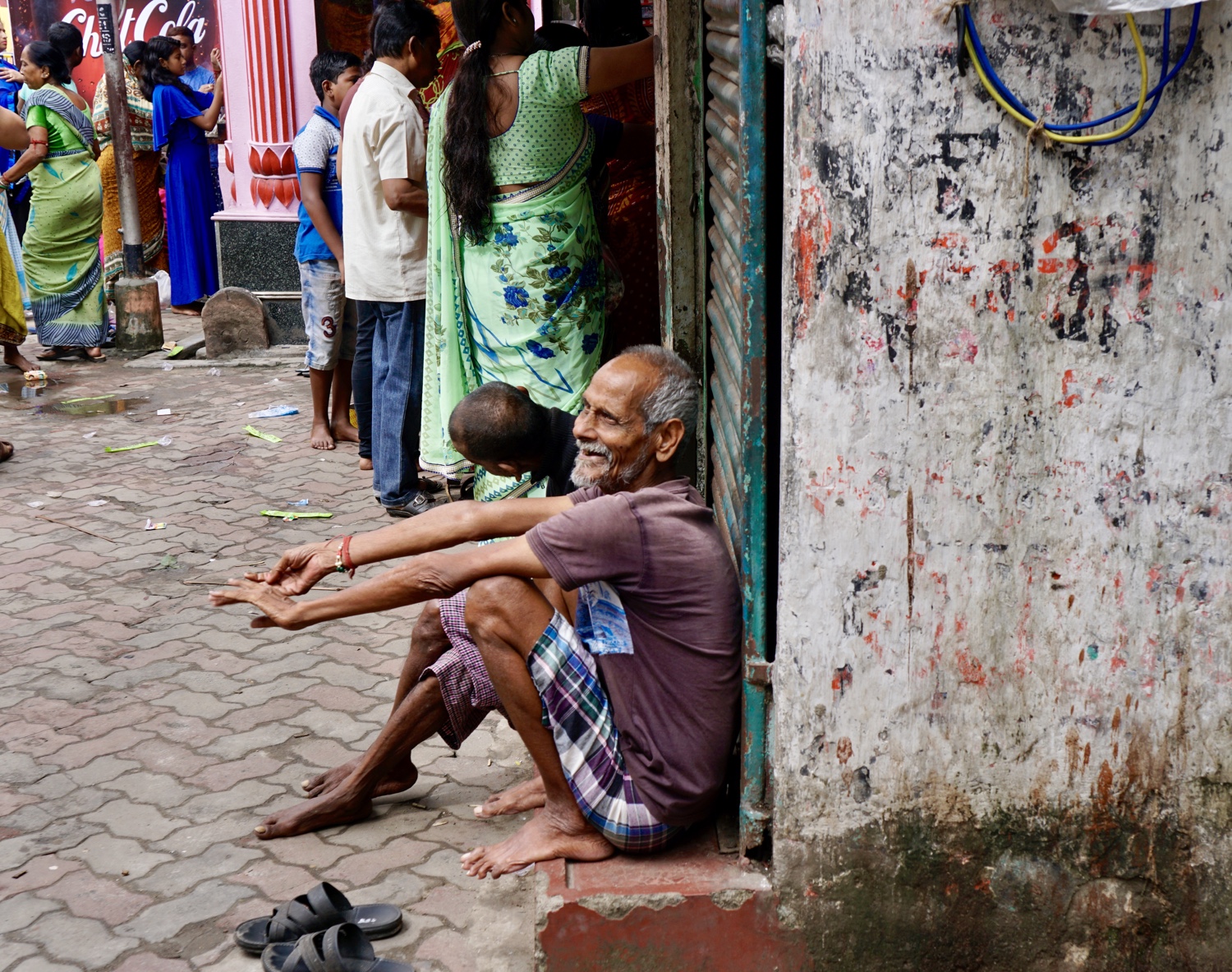
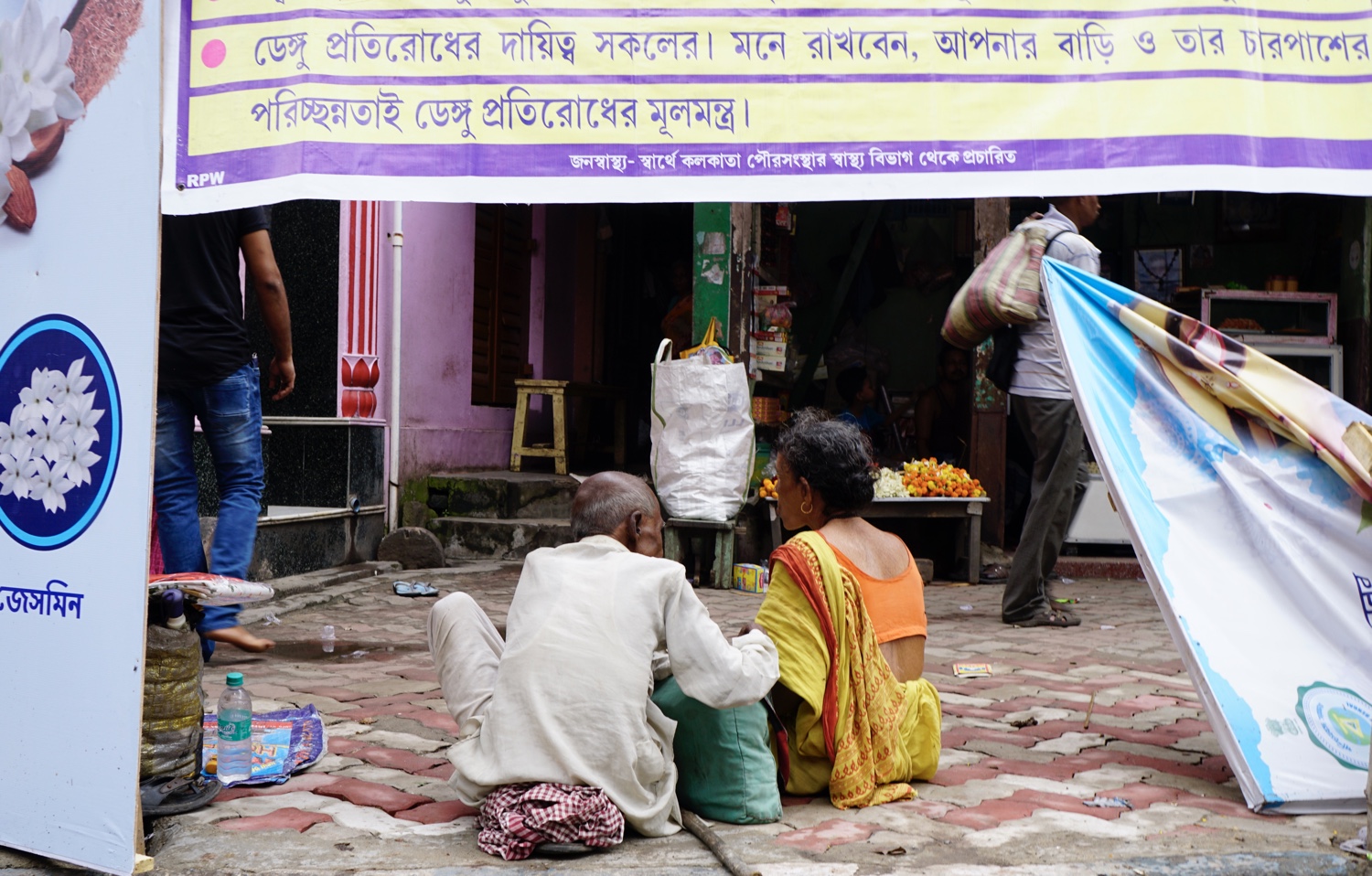
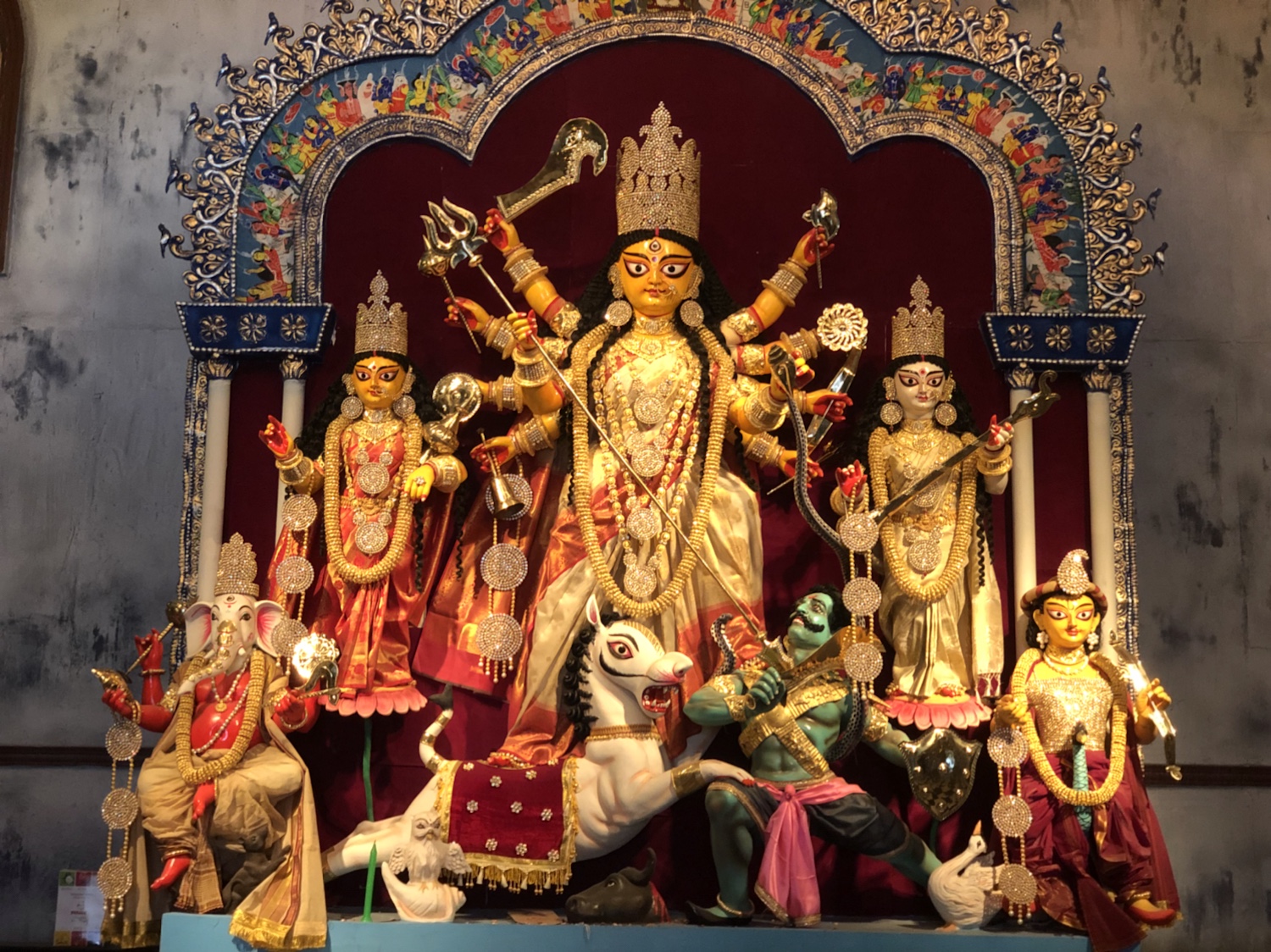
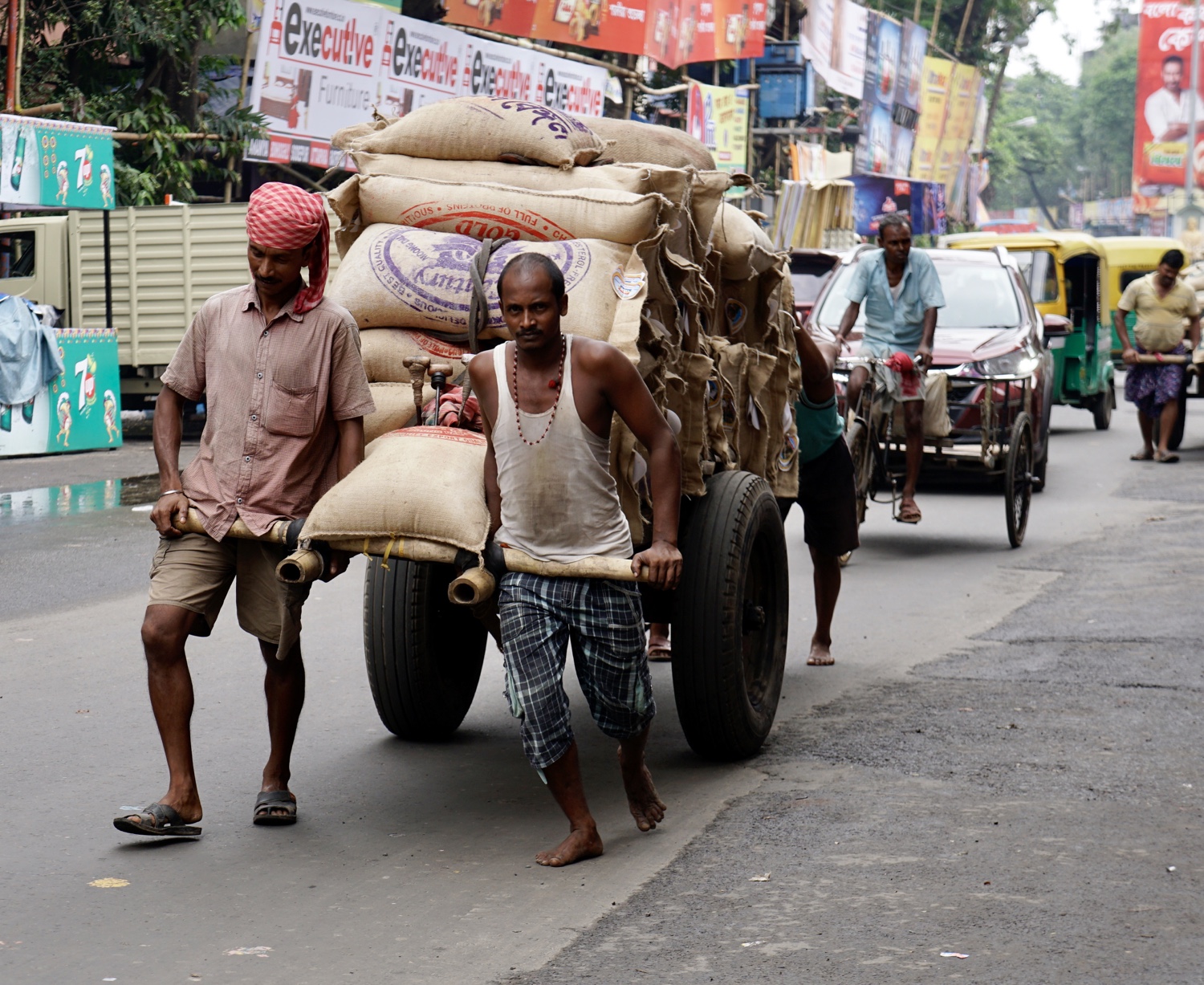
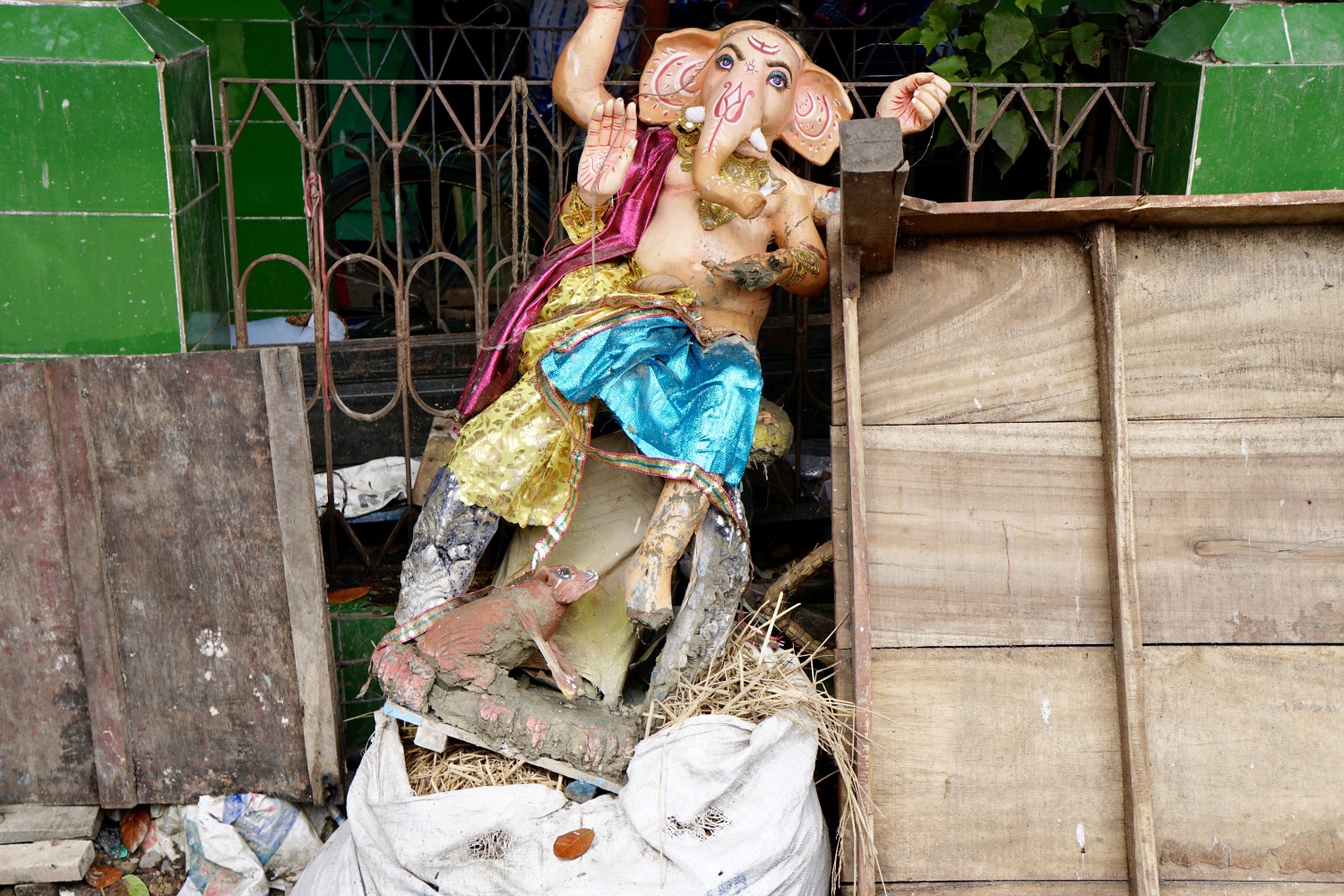
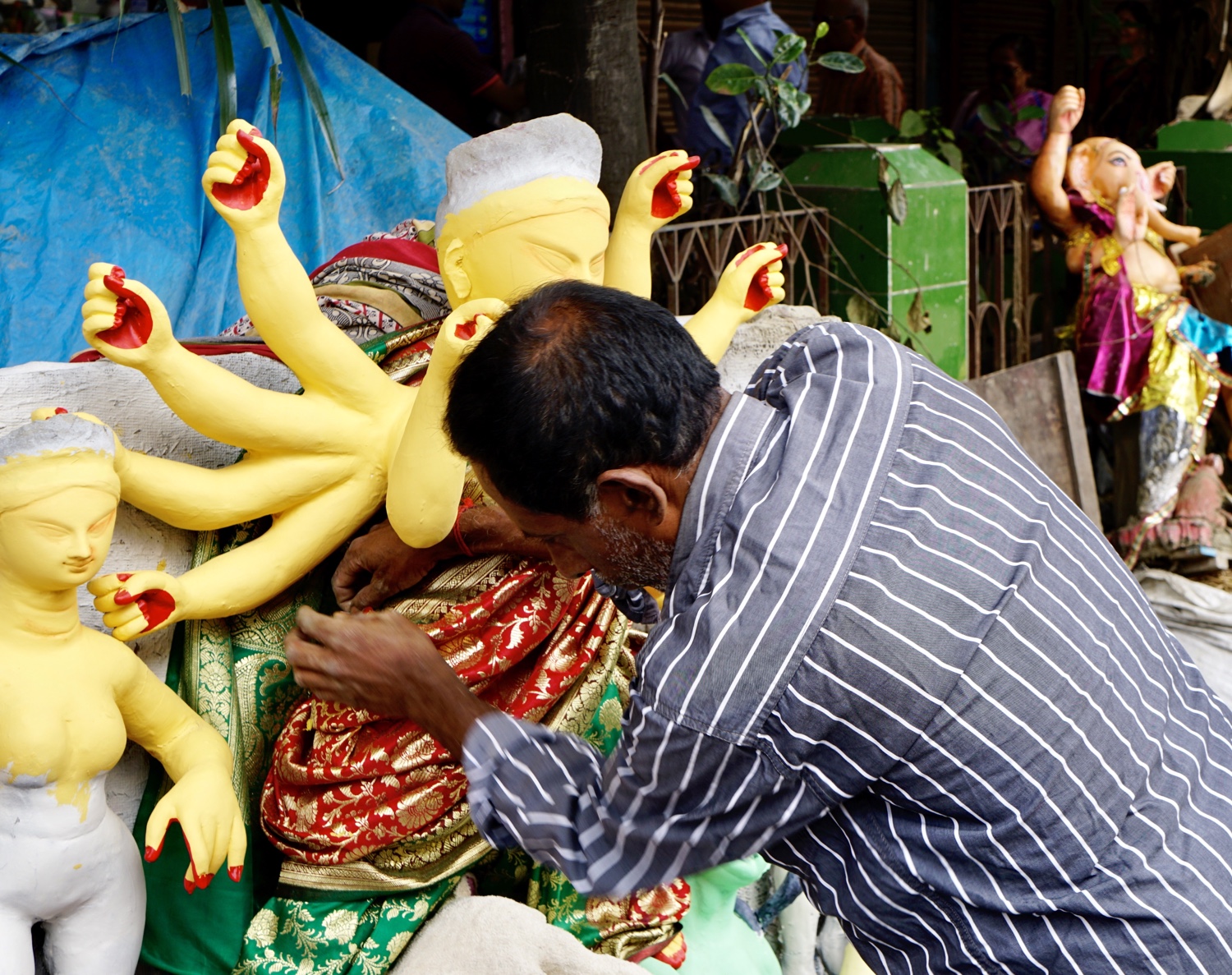
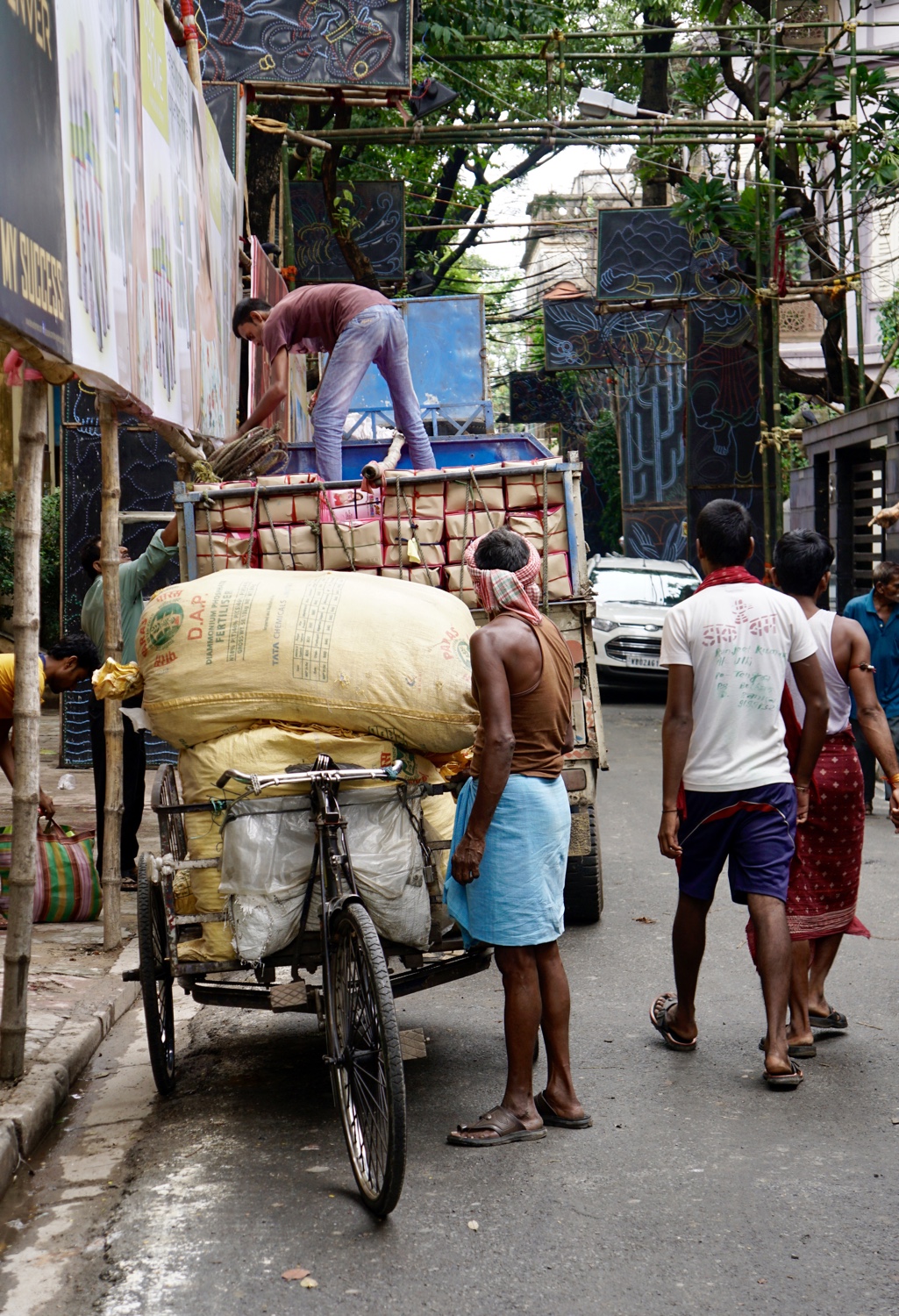
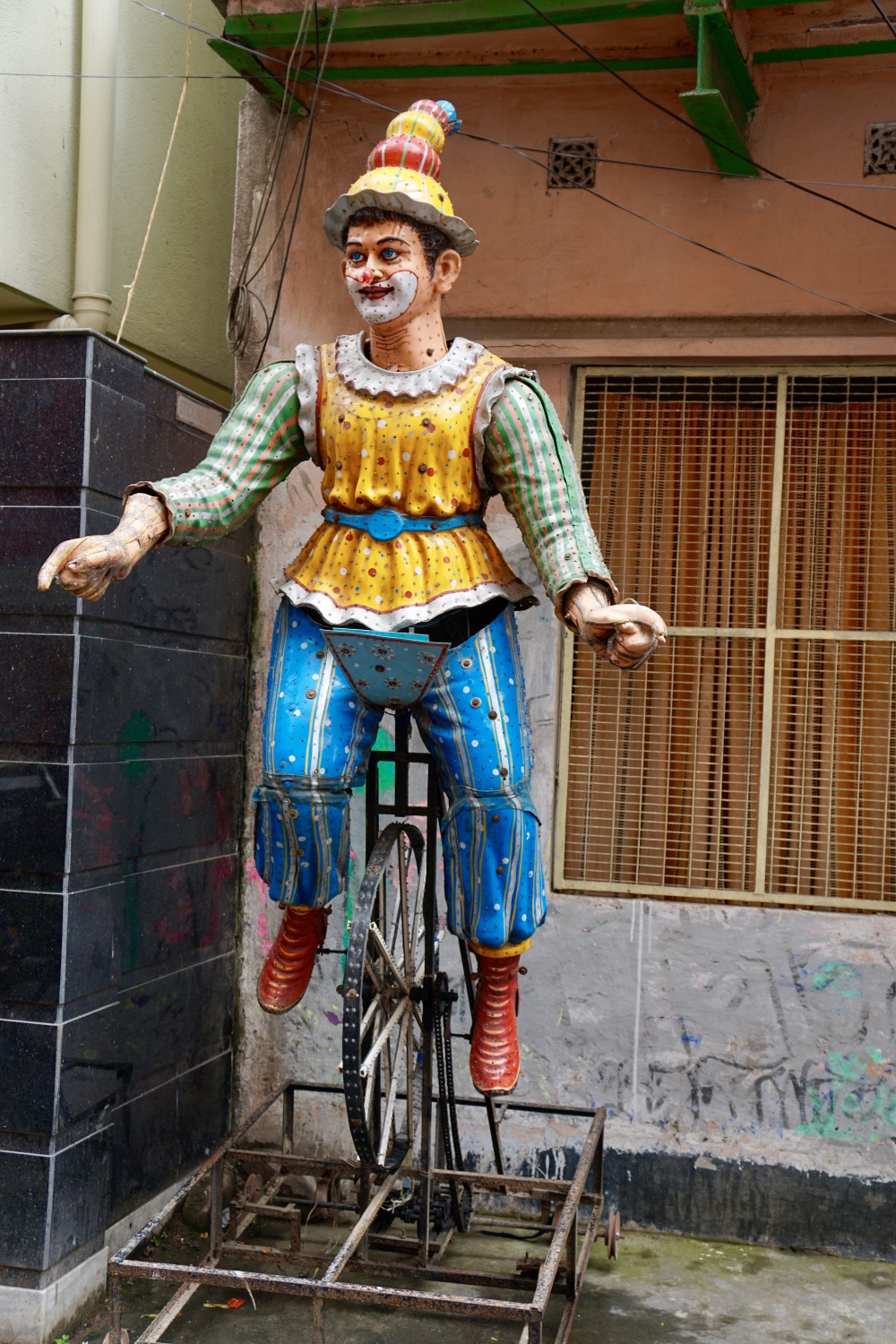
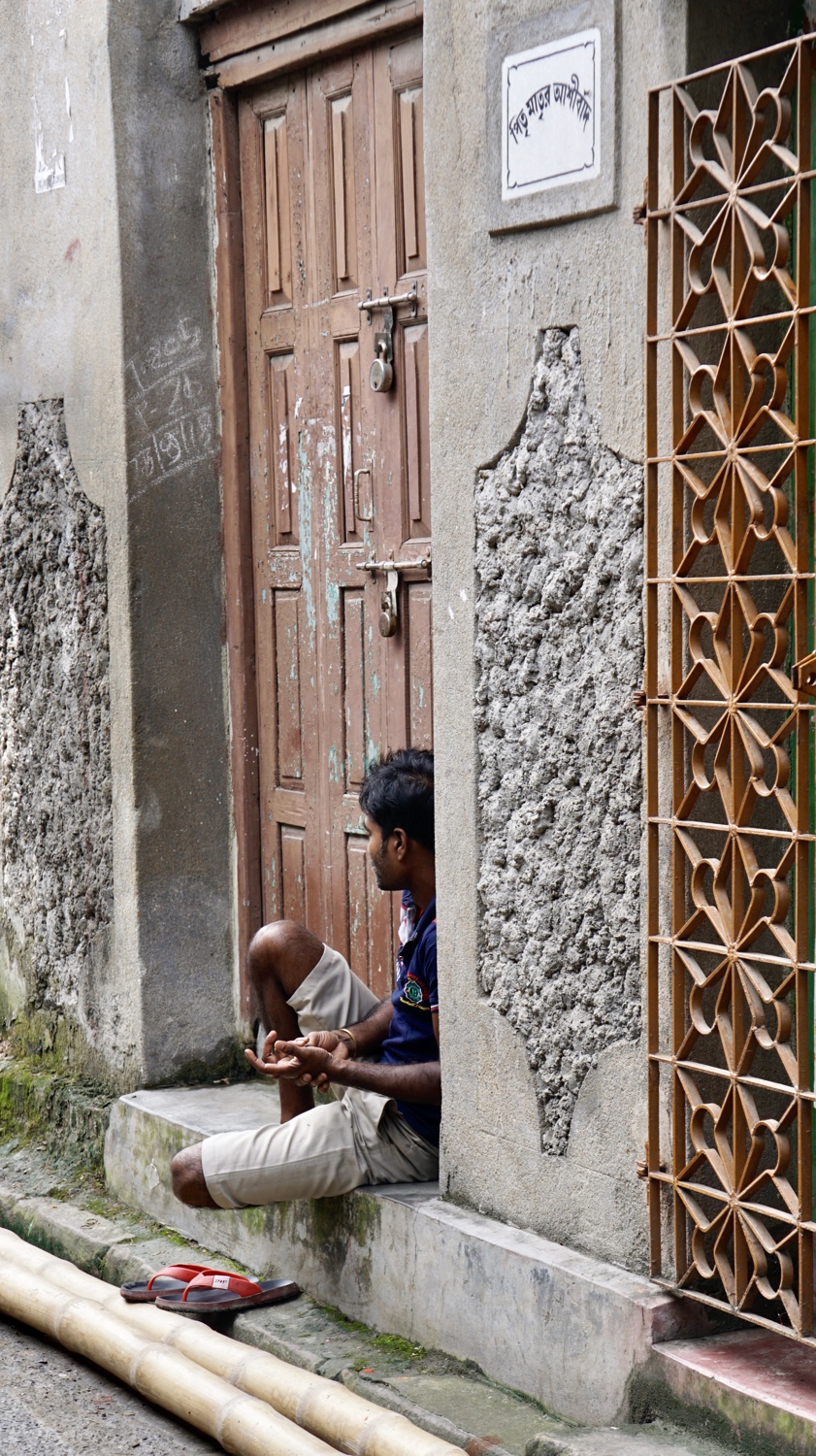

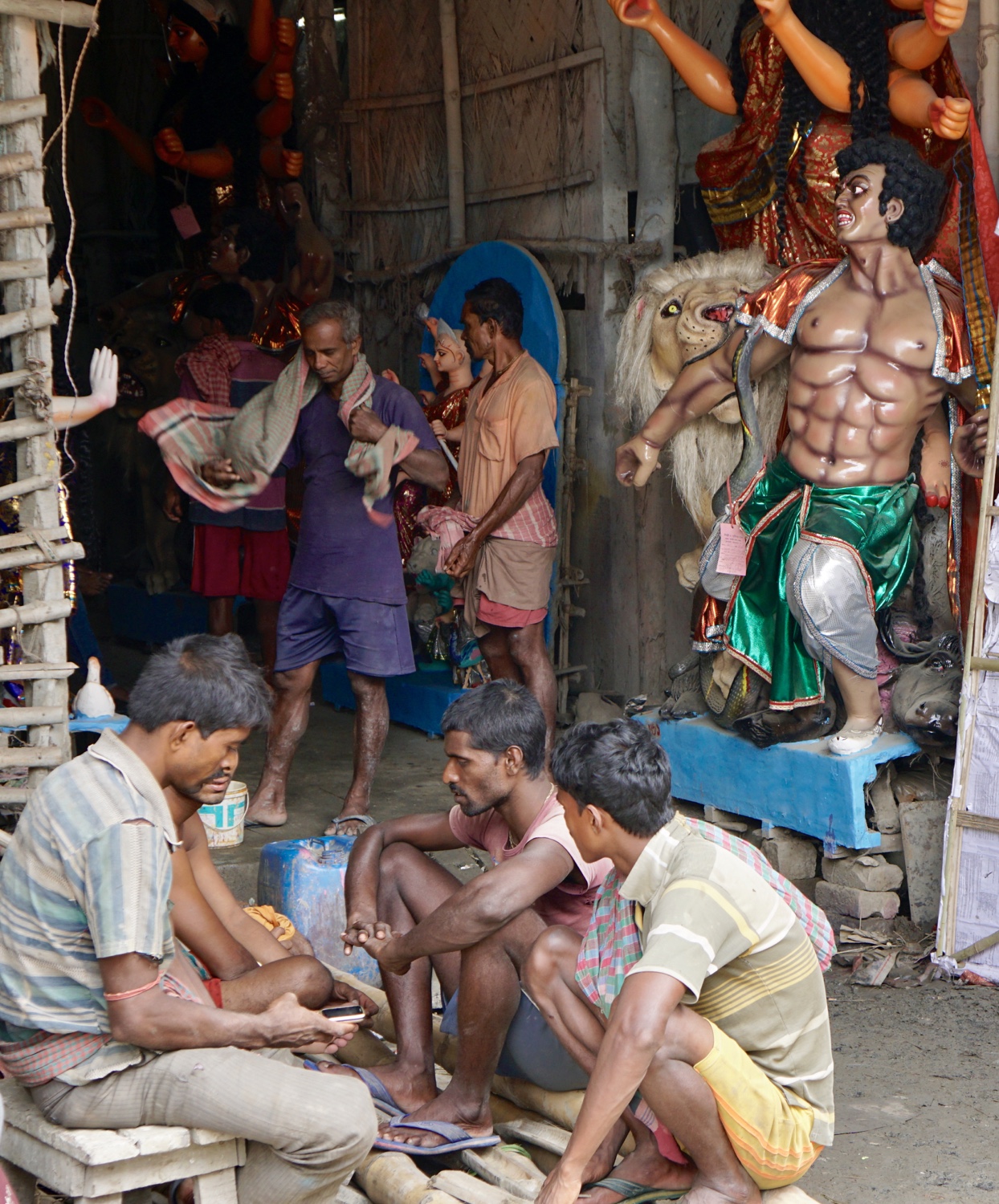
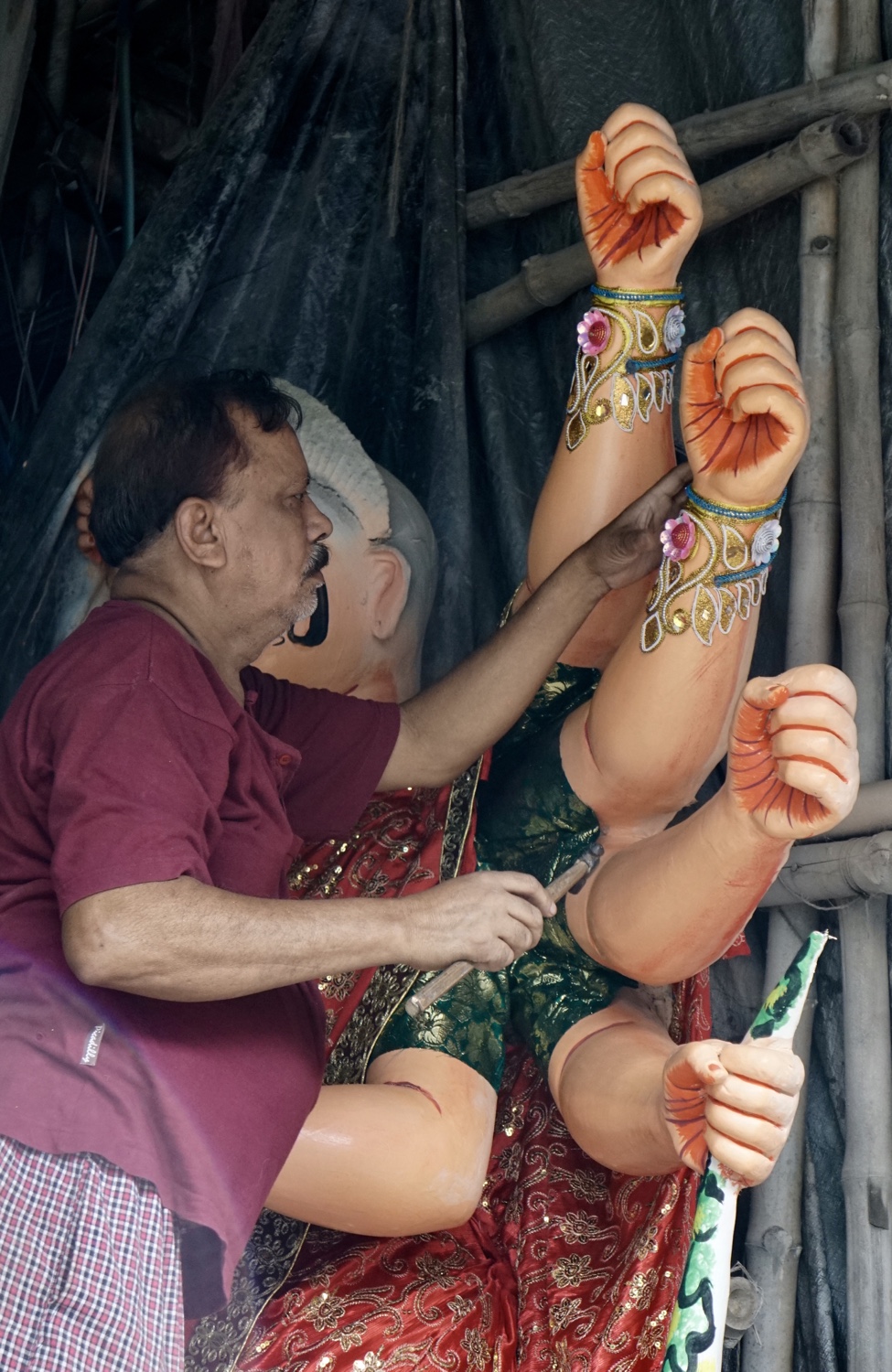

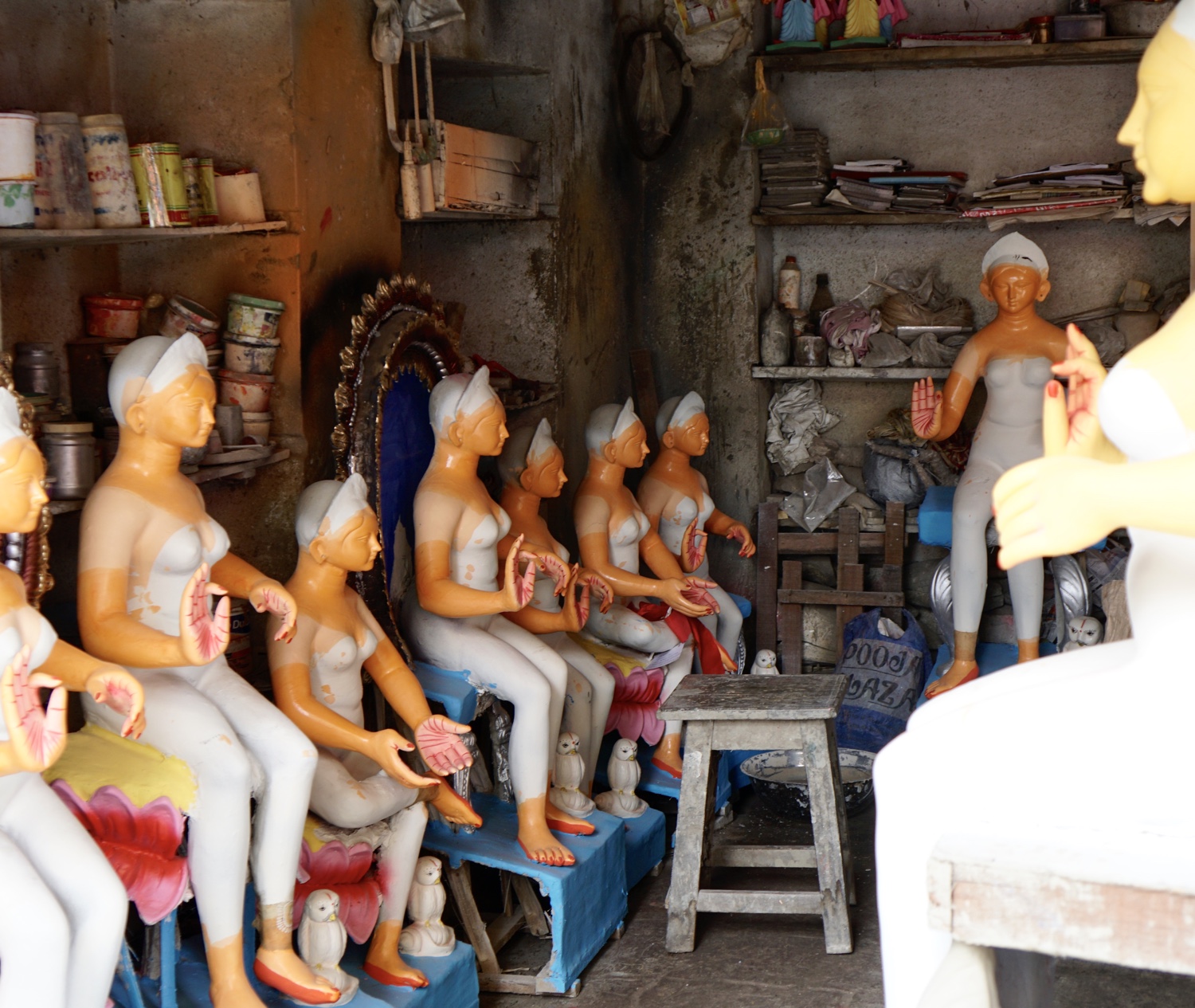

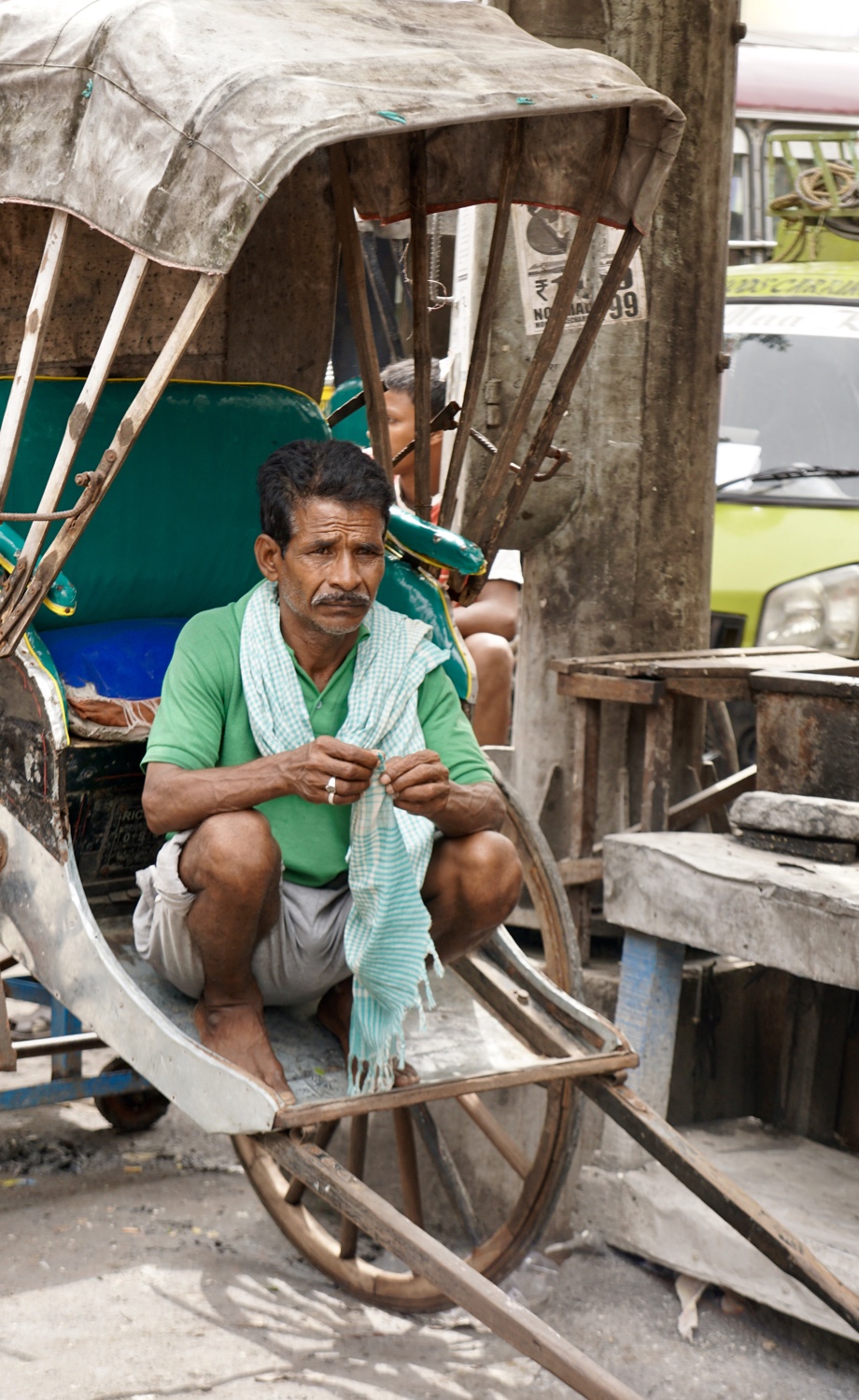



In the afternoon, I visited a Jain temple, learned some of the history of Calcutta from Partha at the Victoria monument and had lunch with Partha, before visiting the very moving tomb and exhibit at Mother House, where Mother Teresa worked and is buried. One gets some sense of the extraordinary work that Mother Teresa did over her long life. While these activities were somewhat rushed, they were all worthwhile, especially the visit to Mother Teresa’s. Partha did a good job of describing the Jain temple and giving highlights of Calcutta’s history, which I’d have benefited more from if I’d had more time or energy. We had rain on and off in the afternoon, but it didn’t interfere materially with our activities.
Below are a few photos of Mother Teresa’s Motherhouse of the Missionaries of Charity. I have not included any of the Jain Temple or the Victoria Monument (museum), because those would be sorta boring.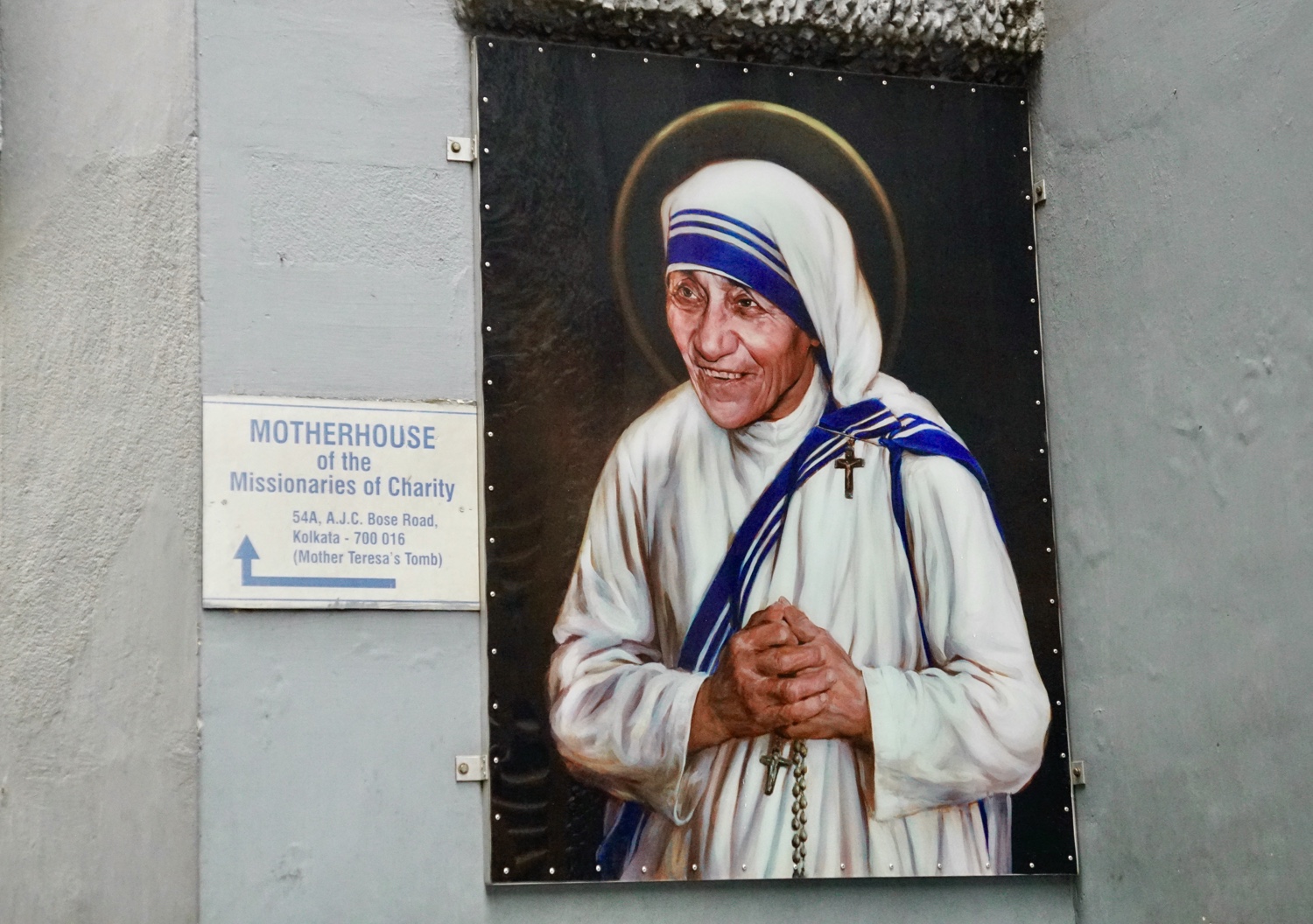
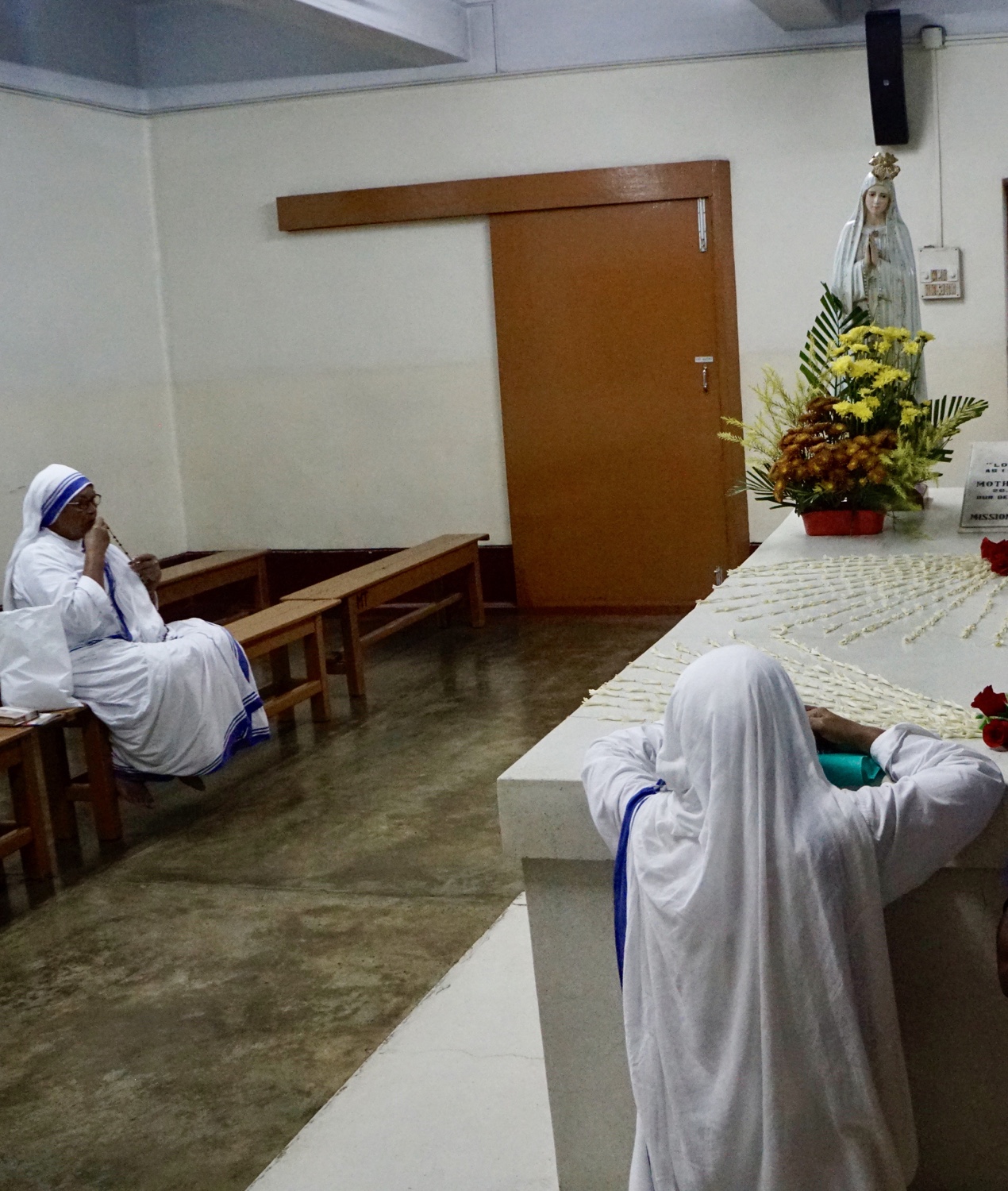
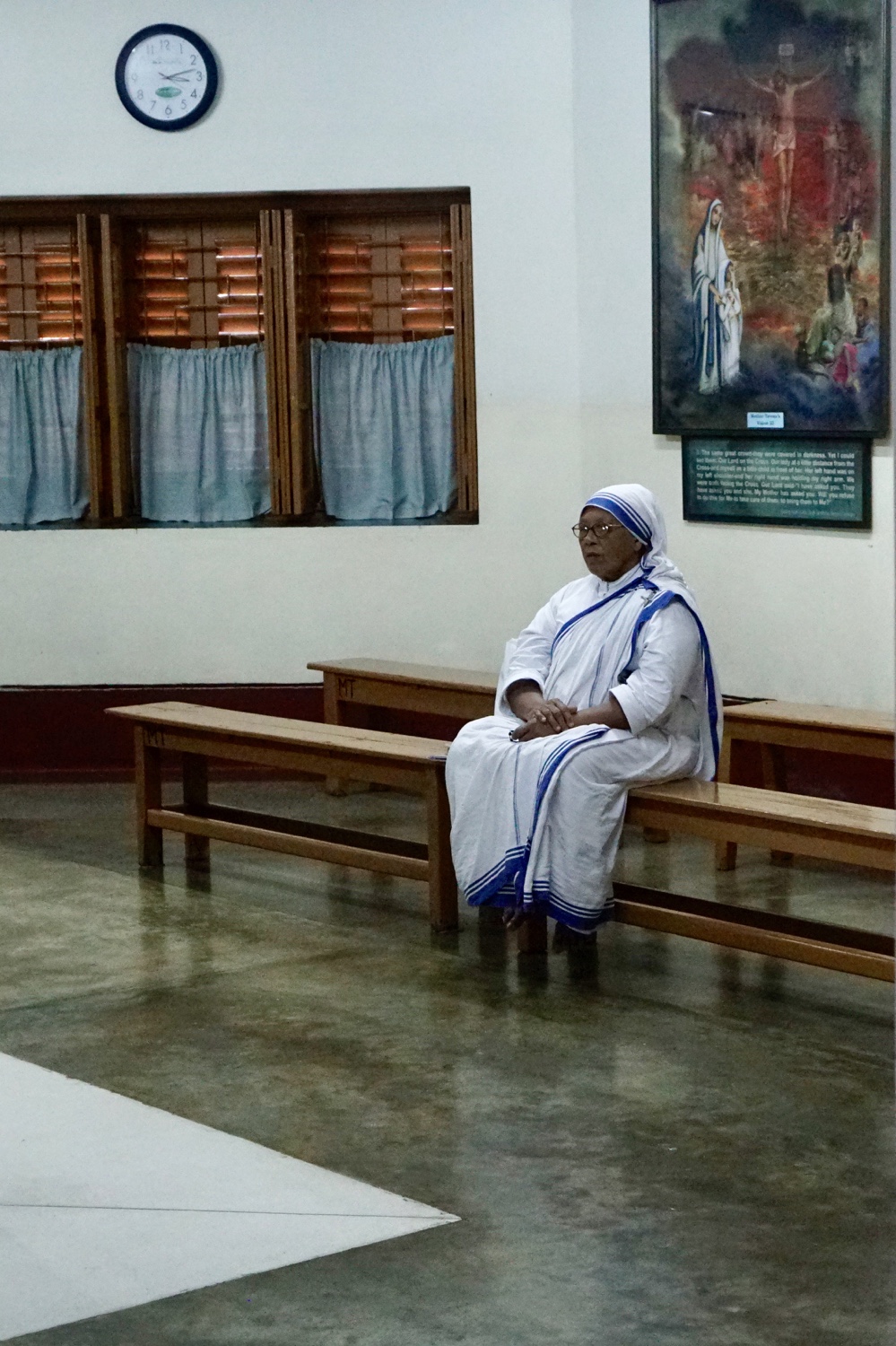
Overall, it is hot and humid, with our air conditioned vehicle a most welcome respite. Streets are crowded and there’s a constant cacophony of car horns blaring.. Partha says that Kolkata is a “Eoropean” city, and there’s a certain truth to that, as compared to other Indian cities I’ve visited, but nobody would mistake Calcutta for Paris.
Showered and relaxed a bit before going out for the dinner that my other fabulous travel agent (besides Shonali), Jean Zunkel in Santa Fe (jean.zunkel@bjadventures.com), arranged for me tonight with Bomti Isengard, a who mingles across global travel circles and offers a taste of real Kolkata at his home, surrounded by tastefully appointed interiors and an enviable art collection. The interior designer, art collector and consultant invites discerning travelers to browse through it, all the while narrating and answering questions.
This experience largely caters to expats and foreign travelers for whom he is something of a gastro guru. Apart from Bengali cuisine, he serves Anglo-Indian dishes like jalfrezi and vindaloo, which are intrinsic to the city’s culinary fabric, including classics like luchi, dal, aloo posto, fish curry, bhaja, mishti doi.
The day before I left on this trip, Jean wrote to warn me, “I just want to remind you that you need to trust me when you start to walk into the building where Bomti lives. It’s a beautiful old historical building and it looks totally abandoned…..
When you are walked up the steps to the floor of his apartment you may think that his assistant is taking you somewhere to murder you….Have your phone flashlight ready because the stairs can be a bit dark. [In fact, there was an old elevator.]
And then you walk into his apartment…..totally amazing and a huge surprise.”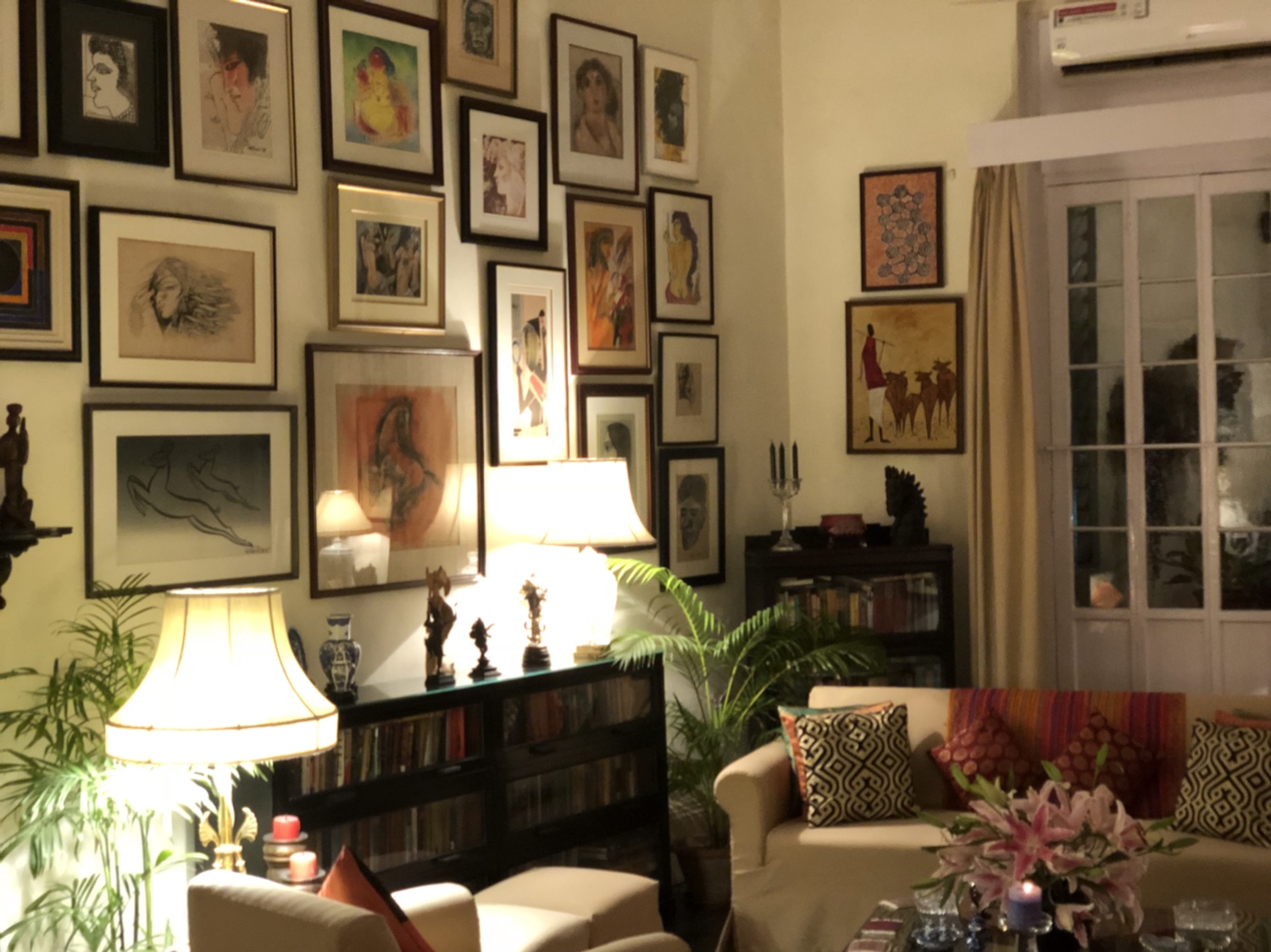

As usual, Jean’s description was spot-on. Indeed, even getting the couple blocks from the hotel to his building was harrowing, because the streets were mobbed with people, and one had to dodge cars, mud puddles and dogs. The approach to the apartment, located in what had once been a huge department store, was seedy, but safe.
Bomti also was hosting a couple from Argentina, Heather and Will (Will was originally from Canada), a couple from Devon in England, Jo and Jeff, a woman friend of theirs from England, and we were later joined by Bomti’s mother, who had chosen some of the art, his younger brother, who is in the tea business and with whom I bonded because he had a labradoodle, and an uncle and aunt who had lived in England for 49 years, but had now moved back to India. Drinks, multiple hors d’ourves and about seven main courses were all excellent, as was the surprise dessert, complete with serenade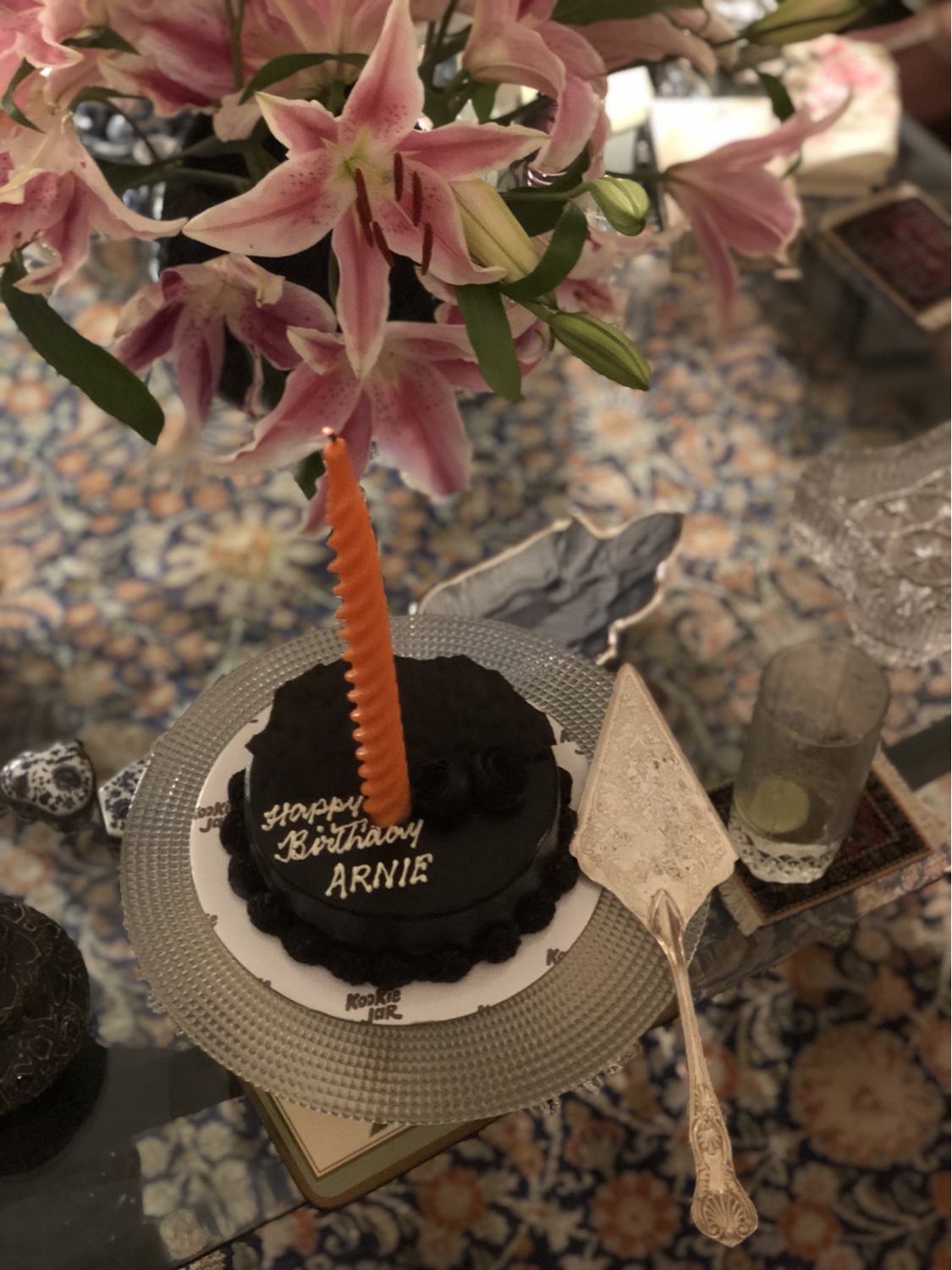
Conversation was varied and lively. We looked at art which Bomti is selling (in another room), but nobody was interested in buying. My impression is that Bomti is more of an art dealer than an art appreciator, but that may not be a fair assessment on my part. All in all, it was a fun and unusual evening, well worth the cost of about $70.
I brought Bomti a copy of Carol and my poetry and photography book, WHERE THE SACRED DWELLS, NAMASTE, which he passed around to everyone. All the guests took time to look through the book and were impressed, as was Bomti, who said that he liked it a lot and asked me to write “To Bomti” and the date above our signatures. And, hey, this seems like the perfect opportunity to tell you about our new book on Southeast Asia that just came out, WHERE FOREST TEMPLES WHISPER. Carol and I are both very pleased with the way it turned out. And, if you’d like a copy (or several) of that and/or our other books, you can order them at www.dualartspress.com. It’s the least you can do, for godsake. 😀
More tomorrow, when I spend my last day in Kolkata.

Excellent, Dadz! Glad you’re not hurting for cake.
Wonderful photos Arnie. So glad you find Kolkata interesting. It is actually one of my favorite cities in India because it is so alive and vibrant and seems so real. Also glad you enjoyed the evening with Bomti.
Jean
What a visual feast – gluttony
What a full day. Your description of the street scene could have been an excerpt from A Passage To India.
What a full day. Your description of the street scene could have been an excerpt from A Passage To India.
Fabulous. Looking forward to tomorrow. Thank you!!!!!